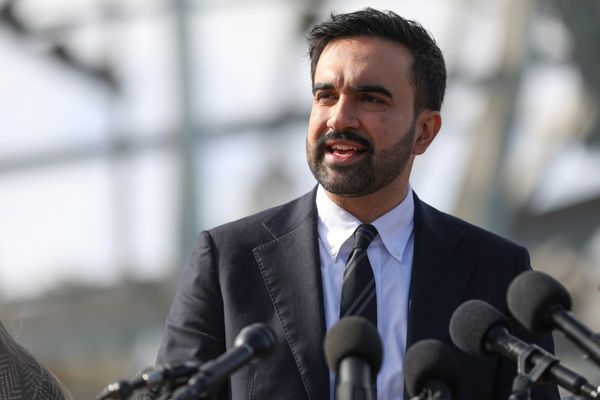
I feel the ocean swell beneath the keel as we leave the Mooloolaba harbour entrance training walls, heading out to sea. I was right here 44 years ago, our course set for Moreton Bay.
Then, we were aboard Pearl Bay, our beautiful cruising ketch, a labour of love and another dream fulfilled for my husband, John. After a harrowing experience crossing the Wide Bay Bar, we spent a week recuperating in this quiet, almost-deserted harbour, its coast guard “headquarters” nothing but an ageing caravan.
Only the harbour entrance is familiar now. The rest has grown and spread beyond all recognition. Today it’s surrounded by mansions and multi-storey holiday apartments, and filled to capacity with boats; an endless forest of masts and rigging. The weather is fine and the seas have eased, but this time I’m not on Pearl Bay and John is not at the helm. Instead, John’s ashes are beside me. They’re in a biodegradable box I’ve covered with photographs of each of the beautiful yachts he built. Adorning the lid is the only epitaph that seemed to fit: “Cosmos Mariner, Destination Unknown.” It’s resting in a basket of yellow rose petals.
On our first trip out of Mooloolaba harbour, John was jubilant. He was born a restless soul, saltwater in his veins and distant oceans in his dreams. As a child in Amsterdam in the 1940s, his beloved “toys” were the tools he found in his grandfather’s ship’s carpenter sea chest. He ran away to sea as a teenager in the 1950s, signing on to the merchant navy for a string of passages across the North Sea. He migrated to Australia in the early 1960s and was among the first to surf the now-famous Bells beach waves in Victoria. In Queensland in the early 1970s, he taught himself to sail in a little Arafura Cadet, winning the novice championship in his first year at Keppel Bay Sailing Club. Taurus, an Arrow catamaran, was the first of his home-built craft.
John’s dreams soon outgrew the bay; the nearby islands beckoned. A Bruce Roberts-designed 18ft trailer-sailer was his next project. We named her Halcyon, and for a while he was satisfied with sailing her across to Great Keppel for snorkelling and picnics on the beach. But in 1978 he spotted an ad for the plans for Peter Ibold’s 35’ classic Endurance ketch. Three years later, having sold our house to finance Pearl Bay’s completion, we were living aboard.
When age and illness caught up with John he switched to hand-crafting model boats and fishing at every opportunity. His death on 5 July 2018 ended our 53 years of marriage – and his lifelong obsession with the sea. John had not wanted a funeral. He had arranged to donate his body to a university’s body donor program, and had been accepted. I learned immediately after his death that the university was no longer able to take him. Too late to find another donor program, my only choice was an unattended cremation. The funeral director handed me his ashes sealed in a basic poly urn. It was not the ending I wanted for him.
Seven years later, I was ready to set him free. But how? What would be a memorable, appropriate farewell for an inveterate seafarer? It had to be the ocean, but simply scattering his ashes off a beach – even Bells beach – just wouldn’t do. Then I found the answer: I learned the Australian Volunteer Coast Guard offers memorial services. John had always described members of the Coast Guard as the angels of the sea, watching over the small and not-so-small craft out on our coastal waters.
Whether as boat crews, radio operators or members of the administration team, the Coast Guard give their valuable time to keep us safe. While we’re relaxing, they are maintaining a listening watch on radio calls, undertaking marine search and rescue operations, delivering accredited training and public education courses. And offering memorial services.
Who better to assist with the scattering of his ashes?
Briefed on safety procedures and buckled into a lifejacket by the QF6 Mooloolaba Coast Guard, I’m aboard the powerful, distinctive bright yellow vessel Mooloolaba Rotary Rescue. Commander Paul Heath, Chaplain Sue Clarke and today’s crew of highly trained and certified mariners are with me.
They are not paid for their service. Staffed entirely by volunteers, this flotilla is funded by donations.
We’re clear to head out as there have been no urgent calls for Coast Guard assistance this morning.
As we leave the harbour, flags are lowered to half mast. It’s been a naval tradition and a symbol of mourning and respect since the early 17th century, said to make room for an invisible flag – the flag of death – to fly.
We pass my sister waving from the end of the harbour wall. Prone to seasickness, she prefers to stay grounded as we make our way to our destination, offshore from Alexandra Headland.
I explained to our chaplain that John was not religious and asked if I could write and deliver my own service – a story of his lifelong relationship with the sea. Sue supported me in this request and is close by my side in case I’m unable to go on. Partway through, I realise everyone aboard has gathered around, genuinely interested. Fellow seafarers ask for a closer look at the photos, to admire his creations, so we pass his box around. John would be so proud – he is a real hit!
Many hands help me lower the box of ashes overboard and we toss in the petals after. Mooloolaba Rotary Rescue motors in slow circles around the drifting petals before the flags are raised again.
As we make our way back between the training walls and into the harbour, I’m elated. It took seven years, but I’m glad I waited to find the perfect way to see John off on his forever voyage. He would have loved every minute. As I step off the yellow vessel, I’m touched by a fleeting sadness, the feeling I’m leaving old friends.
Back home, I find a message from Sue, with a collection of precious photos attached. I hadn’t realised she was compiling a complete record of the memorial service for me. It is a thoughtful gesture that I hadn’t expected, and will allow family and friends to share the day.
As I relive the service through the photos, I’m struck by other realisations. I hadn’t expected so much kindness. I certainly hadn’t expected a day of joy rather than tears. I’ll be forever grateful to the people operating QF6. John was right – they are the angels of the sea. Now, thanks to their help, John is in his element at last, free to roam every ocean forever.







